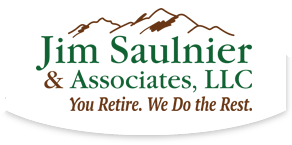By Bob Palechek, CPA | May 15, 2020
A Solo 401(k) – also called a one-participant 401(k) — is much like a regular 401(k) plan, and has the same rules and requirements of any other 401(k). But, it is designed for the self-employed or small business owner without eligible employees. It does allow a business owner’s employee spouse to be part of the plan and not be considered an “employee” under the plan’s rules.
Your business can also have part-time employees or employees under age 21. However, if anyone becomes eligible, they become part of the plan, and it is no longer a Solo 401(k). That means you have to manage these employees carefully. For example, a young worker can age out. Or, if a part-time employee provides enough hours of service to be considered a full-time employee, he or she becomes eligible.
Advantages
A Solo 401(k) plan offers several advantages, which is why a self-employed or small business owner should look at it carefully as a retirement vehicle.
Like a regular 401(k), the plan can accept pre-tax or after-tax (or Roth) contributions. It allows for hardship withdrawals and loans, and the distribution requirements also typically follow a triggering event. (A triggering event can be death, disability, or separation of service.)
A significant advantage of the Solo 401(k) over other self-employed retirement plan options is the ability of the business owner to contribute both as the employee and the employer. That is, the business owner wears two hats.
That allows a considerably higher total contribution to a tax-advantaged retirement account than would be possible with a traditional 401(k) plan. That limit for 2020 is $19,500, plus $6,500 as an over-50 catch-up.
For starters, the 2020 contribution limits for a Solo 401(k) are also a maximum employee deferral of $19,500, plus $6,500 as a catch-up if you are age 50 or over. There must be enough wages paid, or “earned income” if a sole proprietor, to allow for the maximum employee deferral portion.
But, here is where the “two hats” come into play. As the employer, you can contribute up to either 25% of wages paid or about 20% of net self-employment income. (It is best to rely on tax software to make this calculation.) So, depending on the profits of the business or wages paid, by choosing a Solo 401(k), you can put away up to $57,000 in total funds for retirement in one year. And $63,500 for someone over age 50!
(Keep in mind that if the business owner or employee spouse is also an employee of another company and participates in that company’s 401(k) plan, the elective deferrals for their own company’s Solo 401(k) will be limited. Contribution limits are per person and not per plan.)
Here’s another advantage: by hiring your spouse, you can increase your retirement savings even more. The same contribution limits apply to each spouse. Also, as spouses, you can combine retirement funds for alternative investments, something that is not allowed in IRAs. But, as with any spouse hired in a business, it is best to be able to support the compensation with a reasonable salary for the efforts spent.
With a Solo 401(k), contributions by the business owner and spouse (if eligible) are not age-limited. This fact used to be an advantage over traditional IRAs, where you could only contribute up to age 70½. But, the late-2019 passage of the Setting Every Community Up for Retirement Enhancement (SECURE) Act removed the age requirement for IRAs.
Easy and Straightforward
The Solo 401(k) is easy to set up, carries low administrative fees, and has no filing requirements until the asset value exceeds $250,000. After that, the rules require the annual filing of a Form 5500-SF (short-form), which is a much simpler version of the full Form 5500.
You have to form a Solo 401(k) plan before December 31 of the applicable tax year. And, any employee deferrals must be made through payroll or formally elected by December 31 of the same year. However, the funding of the retirement can be up until the personal filing deadline, including extensions.
One last thought: Remember that a Solo 401(k) is just a vehicle you use for retirement savings. As a plan participant, you still have to choose the investments that will be used within the account to build wealth for your retirement.
If you would like more information on Solo 401(k)s or if you would like to open your own Solo 401(k), feel free to reach out to our office at (970) 530-0556 for assistance. We’d be happy to help!





